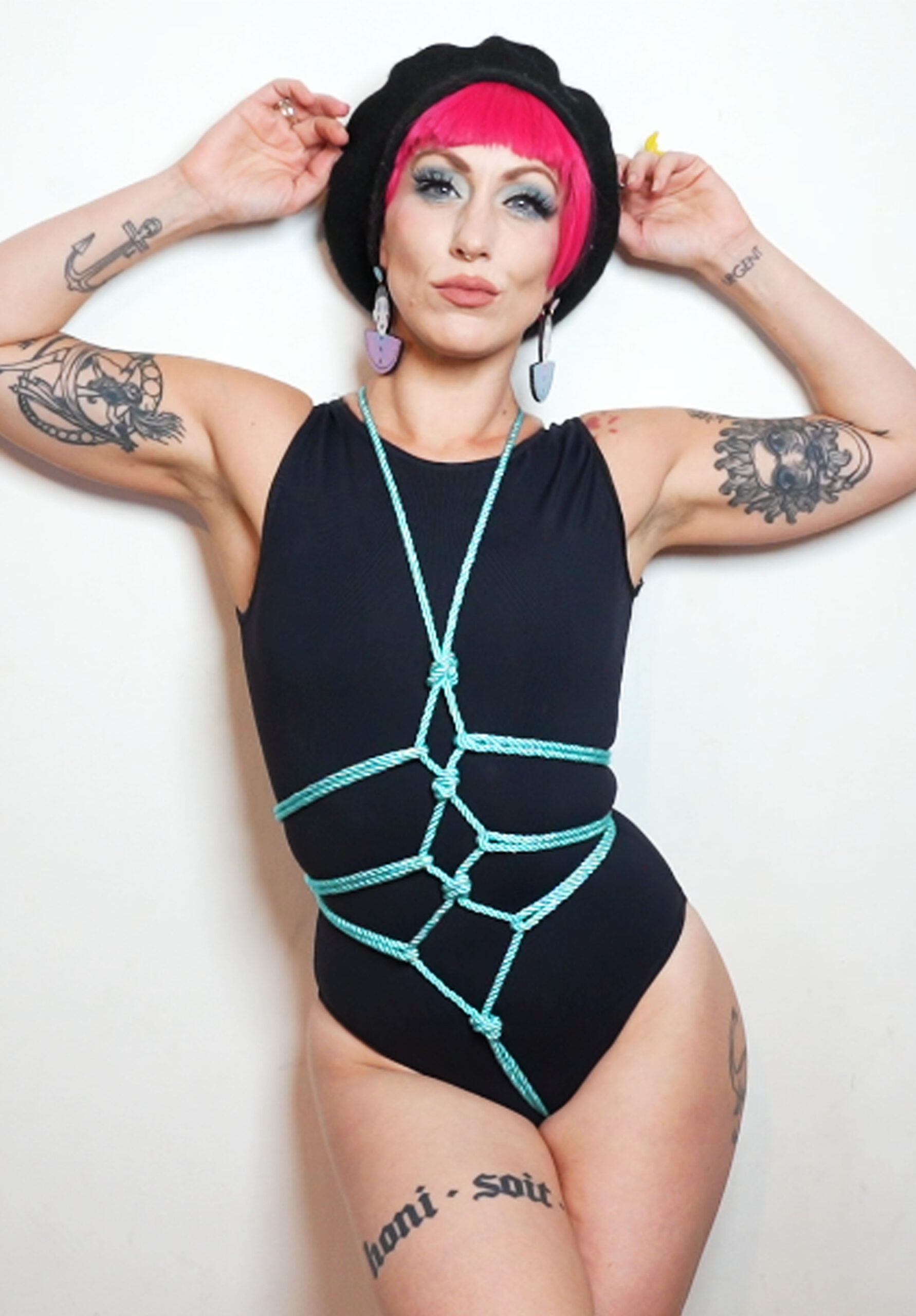What It Means To Be Demigender: Understanding The Fluidity Of Gender Identity

Understanding Demigender Identity
Understanding gender Dime Nails LA identity is a journey of self-discovery, and for many individuals, it’s a complex and ever-evolving process. Demigender identity is one such example, representing a nuanced experience where an individual partially identifies with one gender while not fully identifying with another. This fluidity challenges traditional binary notions of gender and provides space for individuals to explore and express their unique experiences.
Defining Demigender
Demigender describes a person who partially identifies with one gender while not fully identifying with another. It’s an identity that exists on a spectrum, acknowledging the complexities and fluidity of gender expression.
Someone who identifies as demigender might, for example, feel connected to aspects of being male but not fully identify as male. They might also partially identify with femininity but not fully embrace it. The experience of demigender identity is deeply personal, and the specific way someone expresses their demigenderness can vary greatly.
It’s important to recognize that demigender is not simply a matter of “not knowing” one’s gender; it’s an intentional choice based on an individual’s felt experience.
Characteristics of Demigender Expression
Demigender is a gender identity that exists on a spectrum, acknowledging the complexities and fluidity of gender expression.
Someone who identifies as demigender might partially identify with one gender while not fully identifying with another. For example, they might feel connected to aspects of being male but not fully identify as male, or partially identify with femininity but not fully embrace it.
The experience of demigender identity is deeply personal, and the way someone expresses their demigenderness can vary greatly. Some individuals may use specific pronouns or clothing styles to reflect their identity, while others may choose to express it more subtly.
It’s essential to respect an individual’s self-identified gender, regardless of how they express it. Demigender individuals deserve the same recognition, acceptance, and understanding as all other gender identities.
Experiences of Demigender Individuals
Understanding gender identity is a journey of self-discovery, and for many individuals, it’s a complex and ever-evolving process. Demigender identity is one such example, representing a nuanced experience where an individual partially identifies with one gender while not fully identifying with another. This fluidity challenges traditional binary notions of gender and provides space for individuals to explore and express their unique experiences.
Demigender describes a person who partially identifies with one gender while not fully identifying with another. It’s an identity that exists on a spectrum, acknowledging the complexities and fluidity of gender expression.
Someone who identifies as demigender might, for example, feel connected to aspects of being male but not fully identify as male. erotic cock extenders UK They might also partially identify with femininity but not fully embrace it. The experience of demigender identity is deeply personal, and the specific way someone expresses their demigenderness can vary greatly.
It’s important to recognize that demigender is not simply a matter of “not knowing” one’s gender; it’s an intentional choice based on an individual’s felt experience.
Demigender is a gender identity that exists on a spectrum, acknowledging the complexities and fluidity of gender expression.
Someone who identifies as demigender might partially identify with one gender while not fully identifying with another. For example, they might feel connected to aspects of being male but not fully identify as male, or partially identify with femininity but not fully embrace it.
The experience of demigender identity is deeply personal, and the way someone expresses their demigenderness can vary greatly. Some individuals may use specific pronouns or clothing styles to reflect their identity, while others may choose to express it more subtly.
It’s essential to respect an individual’s self-identified gender, regardless of how they express it. Demigender individuals deserve the same recognition, acceptance, and understanding as all other gender identities.
Navigating Social Contexts as a Demigender Person
Navigating social contexts can be complex for anyone, but for demigender individuals, it can present unique challenges. Demigender people experience a fluidity in their gender identity that doesn’t neatly fit within traditional binary categories. This can lead to situations where assumptions are made about their gender based on appearance or name, potentially causing discomfort or even misgendering. Understanding and respecting demigender identities is crucial for fostering inclusive environments where individuals feel safe and accepted for who they are.
Coming Out and Disclosure
Navigating social contexts can be complex for anyone, but for demigender individuals, it can present unique challenges. Demigender people experience a fluidity in their gender identity that doesn’t neatly fit within traditional binary categories. This can lead to situations where assumptions are made about their gender based on appearance or name, potentially causing discomfort or even misgendering.
Coming out and disclosing one’s demigender identity is a deeply personal decision. There’s no right or wrong way to do it, and the timing and approach should be tailored to each individual’s comfort level and circumstances. Some people may choose to come out to close friends and family first, while others may prefer to start with online communities or support groups.
When disclosing, it can be helpful to use clear and concise language to explain what demigender means to you. It’s also important to set boundaries and communicate your preferred pronouns and how you’d like to be addressed.
Remember, it’s okay to take your time and come out at a pace that feels comfortable for you. There are many resources available to support demigender individuals, including online communities, support groups, and mental health professionals who specialize in gender identity issues.
Challenges and Stigma
Navigating social contexts can be complex for anyone, but for demigender individuals, it can present unique challenges. Demigender people experience a fluidity in their gender identity that doesn’t neatly fit within traditional binary categories. This can lead to situations where assumptions are made about their gender based on appearance or name, potentially causing discomfort or even misgendering.
- A lack of understanding and awareness surrounding demigender identities can contribute to these challenges.
- Social cues and expectations often rely on binary assumptions, making it harder for demigender individuals to feel seen and understood.
- Misgendering, or using pronouns that don’t align with a person’s gender identity, can be particularly hurtful and invalidating.
Understanding and respecting demigender identities is crucial for fostering inclusive environments where individuals feel safe and accepted for who they are. Education, open communication, and empathy are essential for creating spaces that are welcoming to all.
Building Support Networks
Building a strong support network is vital for demigender individuals as it provides a sense of belonging, validation, and understanding. Connecting with others who share similar experiences can make navigating the complexities of gender identity feel less isolating.
Seeking out online communities or forums dedicated to demigender individuals or broader LGBTQ+ spaces can offer valuable connections. These platforms often provide a safe space to connect with others, share experiences, and access resources.
Joining local support groups or attending events organized by LGBTQ+ organizations can facilitate in-person connections. Meeting people face-to-face allows for deeper bonding and the opportunity to build relationships based on shared understanding.
It’s important to remember that finding a supportive network may take time and effort. Don’t be afraid to reach out to different groups or individuals until you find those who provide genuine acceptance and support.
The Spectrum of Gender Fluidity
Understanding gender identity is a journey of self-discovery, and for many individuals, it’s a complex and ever-evolving process. Demigender identity is one such example, representing a nuanced experience where an individual partially identifies with one gender while not fully identifying with another. This fluidity challenges traditional binary notions of gender and provides space for individuals to explore and express their unique experiences.
Demigender and Other Gender Identities
Understanding gender identity is a journey of self-discovery, and for many individuals, it’s a complex and ever-evolving process. Demigender identity is one such example, representing a nuanced experience where an individual partially identifies with one gender while not fully identifying with another. This fluidity challenges traditional binary notions of gender and provides space for individuals to explore and express their unique experiences.

Demigender describes a person who partially identifies with one gender while not fully identifying with another. It’s an identity that exists on a spectrum, acknowledging the complexities and fluidity of gender expression.
Someone who identifies as demigender might, for example, feel connected to aspects of being male but not fully identify as male. They might also partially identify with femininity but not fully embrace it. The experience of demigender identity is deeply personal, and the specific way someone expresses their demigenderness can vary greatly.
It’s important to recognize that demigender is not simply a matter of “not knowing” one’s gender; it’s an intentional choice based on an individual’s felt experience.
Demigender is a gender identity that exists on a spectrum, acknowledging the complexities and fluidity of gender expression.

Someone who identifies as demigender might partially identify with one gender while not fully identifying with another. For example, they might feel connected to aspects of being male but not fully identify as male, or partially identify with femininity but not fully embrace it.
The experience of demigender identity is deeply personal, and the way someone expresses their demigenderness can vary greatly. Some individuals may use specific pronouns or clothing styles to reflect their identity, while others may choose to express it more subtly.
It’s essential to respect an individual’s self-identified gender, regardless of how they express it. Demigender individuals deserve the same recognition, acceptance, and understanding as all other gender identities.
Intersections with Other Identities
Understanding gender identity is a journey of self-discovery, and for many individuals, it’s a complex and ever-evolving process. Demigender identity is one such example, representing a nuanced experience where an individual partially identifies with one gender while not fully identifying with another. This fluidity challenges traditional binary notions of gender and provides space for individuals to explore and express their unique experiences.
Demigender describes a person who partially identifies with one gender while not fully identifying with another. It’s an identity that exists on a spectrum, acknowledging the complexities and fluidity of gender expression.
Someone who identifies as demigender might, for example, feel connected to aspects of being male but not fully identify as male. They might also partially identify with femininity but not fully embrace it. The experience of demigender identity is deeply personal, and the specific way someone expresses their demigenderness can vary greatly.
It’s important to recognize that demigender is not simply a matter of “not knowing” one’s gender; it’s an intentional choice based on an individual’s felt experience.
Demigender is a gender identity that exists on a spectrum, acknowledging the complexities and fluidity of gender expression.
Someone who identifies as demigender might partially identify with one gender while not fully identifying with another. For example, they might feel connected to aspects of being male but not fully identify as male, or partially identify with femininity but not fully embrace it.
The experience of demigender identity is deeply personal, and the way someone expresses their demigenderness can vary greatly. Some individuals may use specific pronouns or clothing styles to reflect their identity, while others may choose to express it more subtly.
It’s essential to respect an individual’s self-identified gender, regardless of how they express it. Demigender individuals deserve the same recognition, acceptance, and understanding as all other gender identities.
Demigender individuals often experience their identity in intersection with other aspects of their being, such as race, ethnicity, sexual orientation, and disability.
- These intersections shape their unique experiences and may influence how they express and understand their demigender identity.
- It’s crucial to recognize that demigender identities are not monolithic and can vary significantly based on individual experiences and contexts.
- Understanding these intersections is vital for creating inclusive spaces that affirm the diversity of gender identities and lived experiences.
Evolution of Gender Identity Over Time
The spectrum of gender fluidity encompasses a wide range of identities and expressions beyond the traditional binary categories of male and female. Demigender identity represents one such example, highlighting the complexities and nuances within the gender spectrum.
Throughout history, rigid binary views of gender have dominated societal norms. However, as understanding evolves, we recognize that gender is a multifaceted and personal experience that exists on a continuum. Individuals may identify strongly with one gender, partially with another, or feel a fluidity that transcends these categories altogether.
Demigender individuals partially identify with one gender while not fully identifying with another. For instance, someone might feel connected to aspects of masculinity but not identify as wholly male, or experience partial alignment with femininity without fully embracing it. This fluidity is deeply personal and can manifest in diverse ways – through pronouns, clothing choices, behavior, or self-expression.
Understanding the evolution of gender identity over time reveals a gradual shift away from rigid binaries. As society embraces inclusivity, we see a growing recognition of diverse gender expressions and identities. This evolution reflects a deeper understanding that gender is not solely determined by biological sex but encompasses a complex interplay of social, cultural, and personal factors.
The journey of self-discovery for individuals exploring their gender identity can be profound. Demigender individuals, like all others, deserve respect and validation for their authentic selves. Fostering inclusive environments that celebrate diversity and provide support is crucial for creating a society where everyone feels safe to express their true identities.
sensual domination
Classy Pleasure
- Why Does Lip Filler Not Last On Me - November 10, 2025
- Obagi Nu-Derm System For Dark Spots And Pigmentation In Kingston Upon Thames Surrey London - November 10, 2025
- What Is The Best Treatment For 70 Year Old Skin On Face? - November 9, 2025


